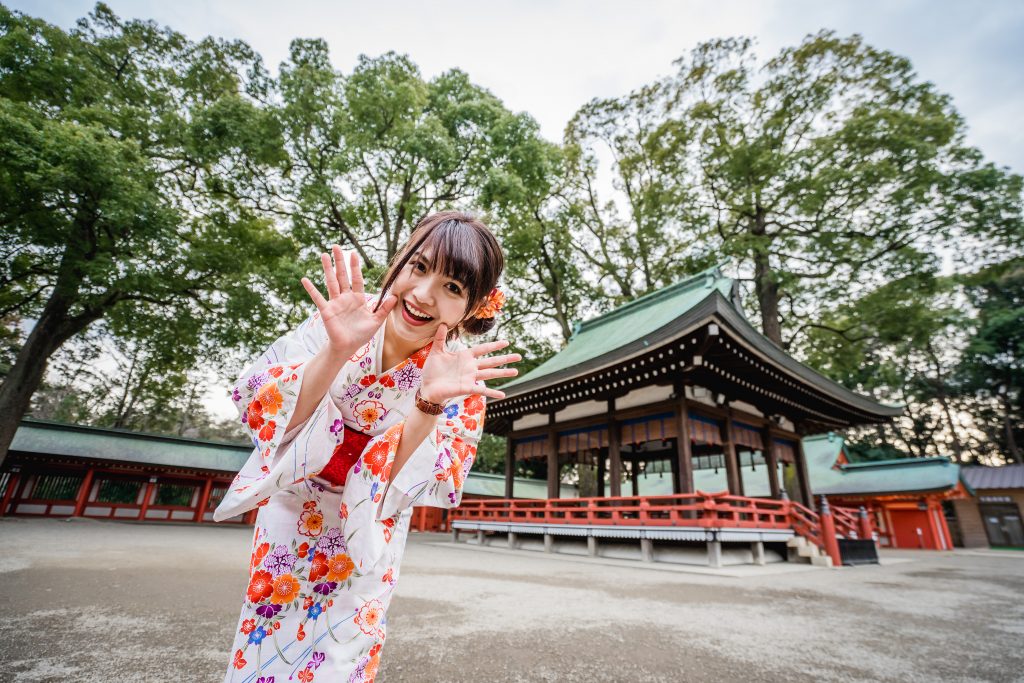Kimono is a word that has been in use since at least the 12th century. Kimono translates as the “thing to wear.” This ancient garment originated as an article of dress for Japanese women and girls. Soon it became popular all over Japan and Asia. This was due to its beauty, which was symbolized by long flowing skirts associated with femininity during this era when society really wasn’t progressing too much past old traditions.
Kimonos are much more than just beautiful clothing; they represent an era of elegance and culture. They have been worn by emperors, courtesans and geishas. All those who desired to make their mark on history through fashion for over 1000 years. The kimono’s rich history can be seen through every aspect from how people wear them today.
Dating back over ten decades to the present day, it continues on as one of Japan’s most iconic garments. Not only does this cloth provide comfort for its wearers, but also brings about pleasure through wear or simply seeing others in their beautiful outfits. Some people can be mistaken on how valuable these items these items really are in culture and history.
Kimonos are a form of traditional Japanese clothing that can be worn at any time. The patterns and motifs have symbolic meanings related to the seasons. For instance, bamboo branches for winter or plum and cherry blossoms representing springtime in Japan. Plant imagery is often used for springtime celebrations in Japan because plants often grow quickly after being planted. The colors and patterns represent different seasons.
Kimonos are not just a symbol of Japanese culture, but also have deep personal meaning. The colors worn reflect their personality and attitude towards life in addition to what it means for them on an individual level. In modern society, people can easily attach meaning onto any object or person based off surface-level information alone. They often miss getting the story being told, much less why this particular piece matters so much more than others. Wearing kimonos with specific patterns tells a tale every time. When someone sees how beautifully designed each pattern actually is, they better understand the careful consideration put into making sure no detail went overlooked during construction and design.
The colors of kimonos have deep meanings. The most prominent being blue, which signifies sky and ocean in Japanese culture. Blue also means loyalty. Red is used to ward off evil spirits from coming near you or entering your home through some other means. For example, if someone walks past while looking depressed. Pink symbolizes youthfulness. It also holds the idea that older ladies will become young again when they die. This is because their spirit remains inside this material world for all eternity until it finds its true place. This hopefully happens sooner rather than later, according to Buddhist beliefs about life after death.
Today, the kimono is worn more than ever. They’re commonly seen at social gatherings like meeting with friends or attending graduation parties. Students will often dress up their graduate uniforms with an elegant Kimono to make them feel more adult-like while enjoying this ancient tradition. Kimono can also be used for more formal occasions such as a marriage and at a tea ceremony where it’s expected that you wear your finest attire.
No matter what the occasion or what your mood, it is fairly easy to locate a kimono or yukata robe that will match your needs and desires. Customers of Chopa – Your Kimono Source often purchase several. Some wear them while lounging at home, some wear them to special events, parties and festivals. Chopa offers over 100 different styles, colors and patterns in many sizes for men, women and kids. Their online Kimono Shop is open 24 hours a day for your shopping convenience. Shipping is always quick as most orders ship within one business day. Visit their shop today at www.chopa.com.
Tags: japanese kimono, kimono yukata, Men's Kimono, Women's kimono








